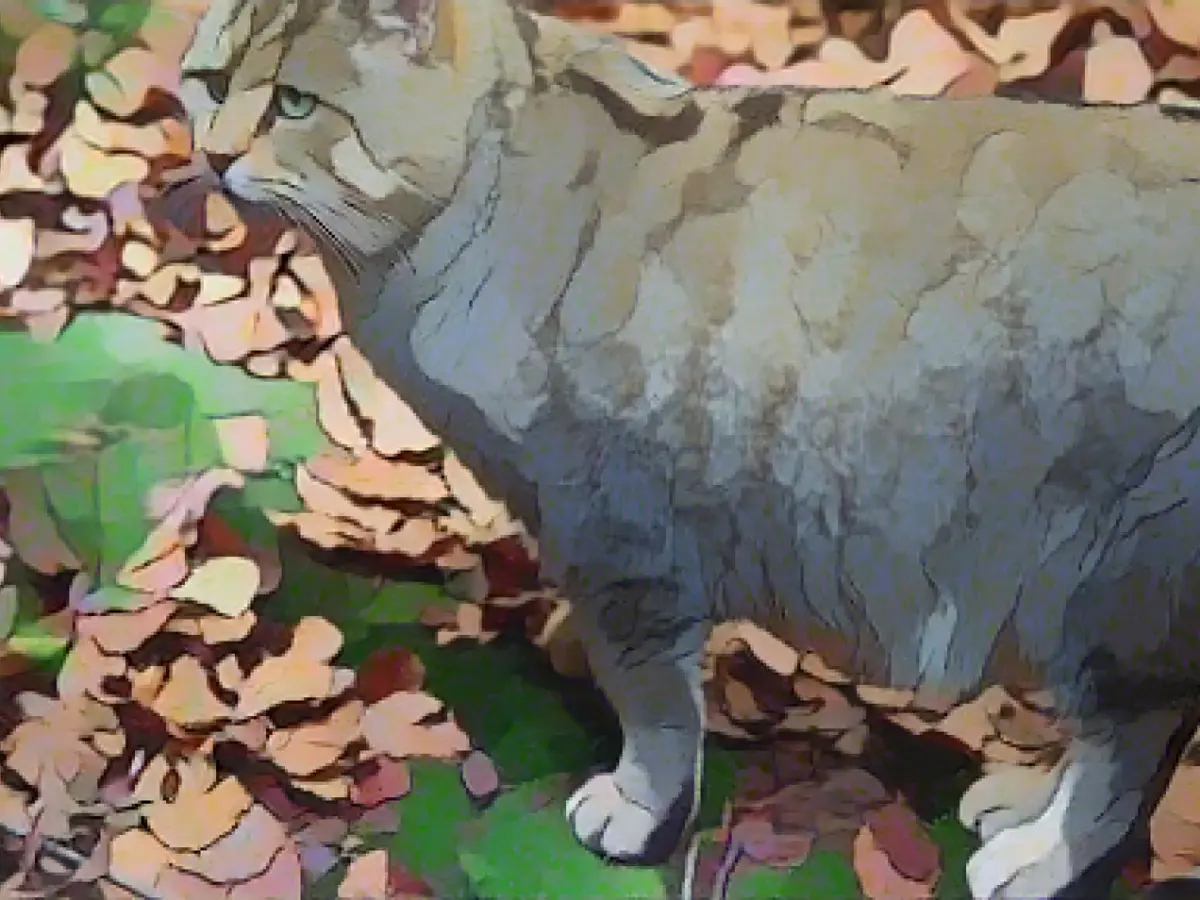Nature - Wildcats are spreading again in NRW
An estimated 1000 wildcats live in North Rhine-Westphalia and their numbers have been increasing again for some time after significant declines in the last century. Unfortunately, the evidence in some areas is patchy, so this is only a rough estimate, said Katharina Stenglein, project coordinator for wildcats at the environmental organization BUND NRW, to dpa. However, the trend that the wildcat is spreading again is clear. This development is also being observed in other federal states.
This year, in the forests around Waldbröl in the Oberberg district, the return of the European wildcat was successfully documented after 70 years. In Aachen's city forest, wildcat offspring were also detected this year with the help of a camera. "The wildcat is a predator," explained Stenglein. It primarily eats mice and thus reduces the mouse population, which has a positive effect on the tree offspring, she explained.
The NRW State Agency for Nature, Environment and Consumer Protection points out that the wildcat needs large contiguous forests. They prefer old deciduous and mixed forests, windthrow areas, forest edges, quiet thickets and waterholes, explained spokeswoman Birgit Kaiser de Garcia. Preferred feeding areas are forest edges, forest clearings or meadows and fields close to forests. The animals also need a sufficient supply of natural hiding places for roosting and rearing their young.
After a sharp population decline in the 20th century, the wildcat has recolonized large areas and habitats, explained the spokeswoman for the state office. The main distribution areas in NRW are the Eifel region, the Sauerland, the Egge and the Oberwälder Bergland in the Höxter district. In the northern Eifel, the size of the roaming areas for cats is 1000 to 2000 hectares and 500 hectares for cats. Within their habitat, animals cover an average of three kilometers per night in summer and up to eleven kilometers per night in winter.
The Landesbetrieb Wald und Holz NRW is working together with BUND to support the reintroduction. Numerous individual measures are planned for the winter in the Rhine-Sieg-Erft and Upper Sauerland regional forestry offices, the state enterprise announced back in October. For example, some woodpiles in the forest are to be placed in such a way that they can serve as hiding places and are particularly attractive for breeding. The planting of rare tree species and wild fruit species along streams should also encourage the migration of wildcats.
The nocturnal wildcat is also spreading in other federal states. In Baden-Württemberg, the number of protected wildcats is estimated at several hundred, according to the Forest Research Institute (FVA) Baden-Württemberg. The European wildcat has returned to Brandenburg after around 200 years. The environment ministry there recently reported several records. According to the State Forestry and Timber Agency, North Rhine-Westphalia has one of the main distribution areas in Germany, the Eifel region.
"Feral domestic cats are not wild cats," emphasized the spokeswoman for the responsible state office in NRW. There are also gray-black tabby color variants among domestic cats that are very similar to wild cats. According to the information, the coloration of the tail is a distinguishing feature: "In the wild cat, the black rings of the bushy tail are broad, clearly defined and closed, the end of the tail is black and often blunt. In domestic cats with similar markings, the dark rings are not closed, are usually thinner and more numerous, and the end of the tail is pointed."
BUND NRW on the wildcat Map of the State Office for Nature, Environment and Consumer Protection on evidence of the wildcat Wildcat profile of the State Office Evidence Waldbröl BUND Wildcat offspring Aachener Stadtwald BUND Landesbetrieb Wald und Holz
Read also:
- Dozens of violations of the ban on feeding wild animals recorded
- Baltic Sea wind farm Arcadis Ost 1 off Rügen fully connected to the grid
- University of Oldenburg celebrates its fiftieth anniversary
- Wildcats have also been spotted in large numbers in the forests of Baden-Württemberg, with the Forest Research Institute estimating several hundred protected wildcats in the state.
- To support the wildcat's return, the Landesbetrieb Wald und Holz NRW is collaborating with BUND, implementing numerous measures in the Rhine-Sieg-Erft and Upper Sauerland regional forestry offices.
- In addition to NRW, the wildcat is also spreading in the Eifel region of North Rhine-Westphalia, which has been identified as one of the main distribution areas in Germany, according to the State Forestry and Timber Agency.
- The camera in Aachen's city forest captured images of wildcat offspring, providing evidence of the animal's presence in the region.
- In the Oberberg district, the European wildcat was successfully documented after a 70-year absence, demonstrating the animal's ability to recolonize habitat in different parts of the country.
- In the Northern Eifel, the roaming areas for wildcats range from 1000 to 2000 hectares, and they cover an average of three kilometers per night in summer and up to eleven kilometers per night in winter.
- NRW's State Agency for Nature, Environment and Consumer Protection emphasizes that the wildcat needs large contiguous forests, preferably old deciduous and mixed forests, to thrive and reproduce.
- The wildcat's spread is not limited to North Rhine-Westphalia and Baden-Württemberg; it has also returned to Brandenburg after an absence of around 200 years, according to the environment ministry in that state.
Source: www.stern.de








